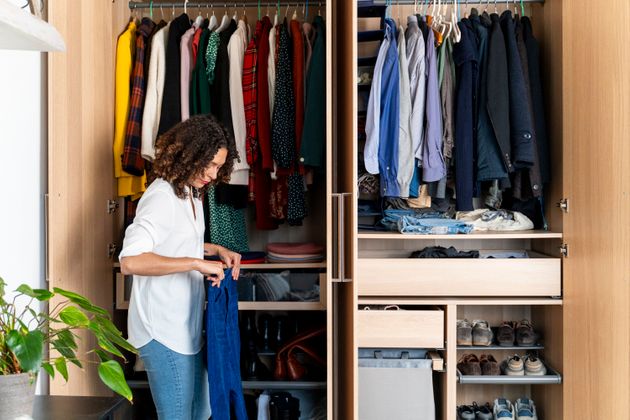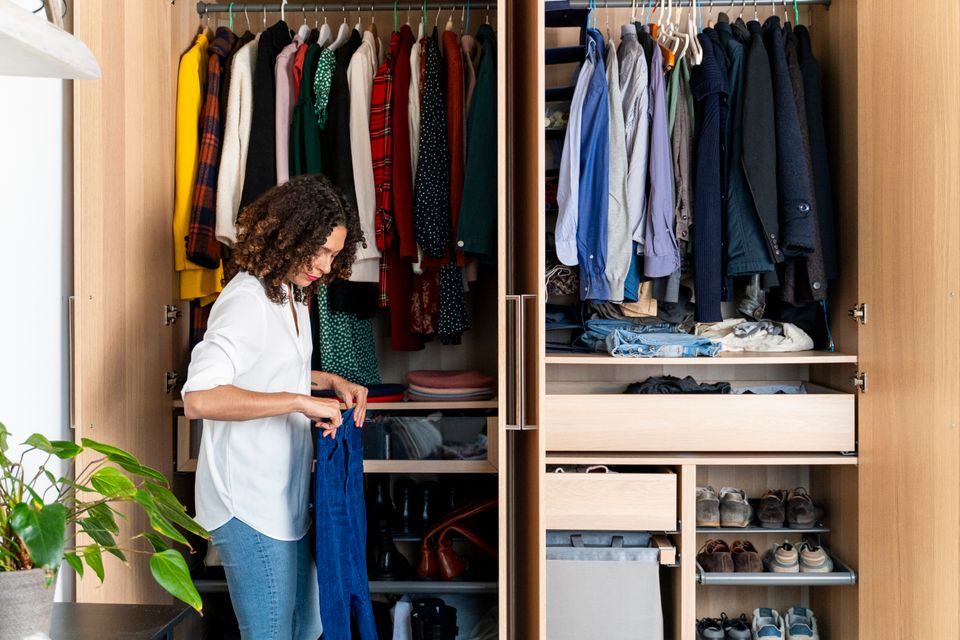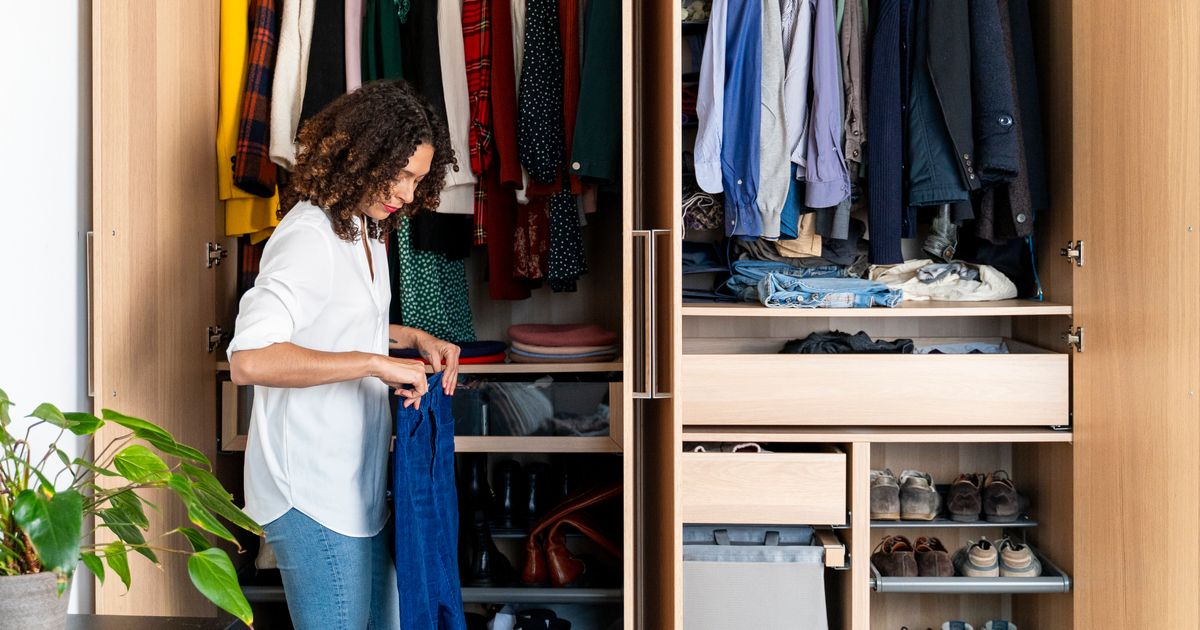Home organisation has really had a moment in recent years. And even after the world was introduced to Marie Kondo, the extra time we’ve all spent at home during the Covid-19 pandemic has further underscored the value of tidying up.
“Many people suffer with disorganisation for a long time before making changes,” Lisa Zaslow, a professional organiser at Gotham Organizers, told HuffPost. “It’s worth it to fix all the ‘little’ problems that annoy you every day – the kitchen drawer where you can’t easily find a can opener, the closet rod that’s so stuffed with clothes you need a crow bar to remove a jacket, the flimsy hangers that your clothes keep falling off. Taking the time to conquer your organisation problems will improve your quality of life.”
Advertisement
But tackling a cluttered home and creating systems that work for you and your family can be very challenging. Inevitably, many folks commit organising faux pas along the way. To help those who aspire to keep a tidy space, we asked experts to share the biggest mistakes they see people make with home organising. Read on for 19 approaches to avoid (and their advice for getting it right).
Buying Containers Before Decluttering
“One of the most common mistakes that I’ve seen people make when organising their homes is buying organising tools (containers, gadgets, labels, etc.) before they sort and purge. Sorting your belongings into trash, donate, and keep categories is not just to help you get rid of unnecessary or unwanted items. It also serves the purpose of helping you to realise not only what you have, but also how much of it you actually have.” ― Carolyn Rogers, professional organising consultant at Neat Nerd Solutions
“People purchase items to ‘get organised’ without engaging in a few good de-cluttering sessions! It’s almost as if folks believe that it’s the product that will ‘get and keep’ you organised, and not a dramatic shift in habits, behaviours, or relationships to the stuff and space that will actually increase the likelihood that you will find success as an organised person when you don’t have a lot of stuff to keep track of.” ― Regina Lark, professional organiser at A Clear Path
Advertisement
Not Taking Measurements
“When it comes to organising, size matters. This is especially true if you’re seeking a specific aesthetic. Those super cute baskets don’t look the same if they are too large and hanging off of the shelf where you planned for them to reside. Or an under-sink storage item that doesn’t actually fit under the sink is not useful. How about the Christmas decoration containers that are too small or you didn’t buy enough to hold all of your decorations. Be sure to obtain measurements for both the space and the item(s) that you plan to occupy it.” ― Rogers
“Please don’t eyeball a shelf or a closet or a drawer and guesstimate what kind of bin or helpful divider or hanging pocket shoe rack might fit. Measure the hell out of any drawer or door or shelf before ordering online or in person. Width, depth, height are your friends and so is a tape measure.” ― Jeni Aron, professional organizer at Clutter Cowgirl
Being Overly Ambitious
Advertisement
“People often bite off more than they can chew and get totally overwhelmed. Instead of tackling ‘your whole closet,’ start with a section of shoes or the dresser. Keeping the projects small and manageable will keep things from feeling too overwhelming.” ― Tova Weinstock, professional organizer at Tidy Tova
“A common challenge when organising at home is being overly ambitious. Instead of creating mini-projects and taking small steps, people try to do too much at once. This can be de-motivating, debilitating, cause burnout, and prevent them from reaching their organising goals.” ― Linda Samuels, professional organiser at Oh, So Organized
“Don’t burn out by devoting an entire weekend on a project. I break my sessions up into three-hour blocks. It can be tiring and emotionally draining work depending on the project. Do smaller bursts of work so that you keep your motivation and energy going. Set a timer if you have to and take lots of breaks.” ― Aron
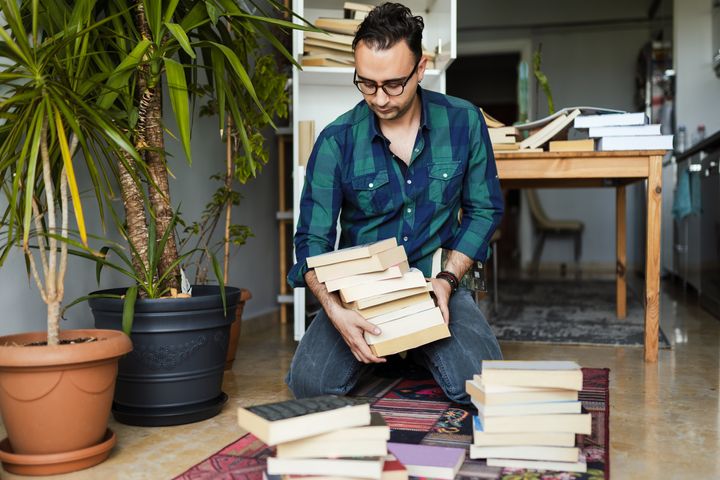
Not Paring Down
“A typical challenge people encounter with home organisation is underestimating the power of the edit. Before deciding the best way to organise a space, it is essential to release those things you no longer need, want, or use, so you can create ‘homes’ for the keepers.” ― Samuels
“I’ve had clients hold on to ‘mementos’ ― broken, torn, and/or nonfunctional items ― and keep old cords even when they don’t know what device the cord connects too.” ― Nicole Arroyo, professional organiser at Neatly Nic
Getting Too Fixated On Instagram
“It’s not uncommon that people will try to force popular organising solutions into their life rather than use the ones that work best for them. While you may need to make slight adjustments to your lifestyle and daily routines in order to be and stay more organised, you want to select the solutions that work best for your life, not that look the best on Instagram.” ― Jeffrey Phillip, professional organiser and interior designer
“Most of the home organising photos that are shown on Instagram are staged. In real life, no one has rainbow clothes (or only one colour clothing), rainbow food in the refrigerator, or rainbow anything. If you look closely at the before and after pictures of pantries on Instagram, for example, you’ll find that few of the products are the same. When you look at refrigerator photos on Instagram, there are no leftovers, milk, or juice. You can either organise a space or stage a space for a picture.” ― Barbara Reich, professional organiser at Life Organized
“People tend to purchase organising supplies for their ‘cuteness’ versus whether they will actually use it or not! When my team is called in to help a client ‘get organised,’ we see a LOT of organising products that are unused, poorly used, or used-to-overflowing.” ― Lark
Advertisement
“Don’t compare your home or space to someone else or a catalog look. Organising is about functionality. While the visual appeal comes with it, that’s not the goal. The goal is to maximise space, minimise stress and save time. So systems need to be centreed around that and not just making it look pretty.” ― Pooja Naik, organizing consultant at Organising With You, Inc.
Storing Everyday Items In Inconvenient Locations
“Don’t put everyday items in hard-to-reach places. Instead, keep items you use all of the time close by.” ― Sarah Giller Nelson, owner of Less Is More Organising Services
Overfilling Spaces With Containers
“A common pitfall to avoid is overfilling spaces and containers. A good organising system is easy to access and has room to grow. If you have to stuff items to fit them in the designated location, you are likely to become frustrated and the system will fail.” ― Seana Turner, founder of The Seana Method
Getting Hung Up On Making Decisions
“That’s all clutter is: postponed decisions. If your gut is telling you to hold onto it, then hold onto it. This is not the only opportunity you have let go of an item. There is always the second-round edit. Keep it moving!” ― Julie Naylon, professional organiser at No Wire Hangers
Dumping Everything Out At Once
“Don’t dump everything out! That will create a massive, scary mess. Instead, work on one area at a time and put things back as you go.” ― Weinstock
“Once we taste the satisfaction of organising, the overachiever in us may be tempted to take on the entire house at once! Our success fills us with an energy that makes us feel like we can conquer an entire world of unorganised closets, drawers, and pantries. But soon after pulling everything out, our energy starts to wane and we may find ourselves in what looks like a disaster zone. We then have to resist the urge to stuff everything back into those closets, drawers and pantries to eliminate the overwhelm of visual chaos. Instead, we should try to pace ourselves and harness that fiery energy.” ― Kellie Powell, lead professional organiser and chief operating officer of Dexterous Organising
Advertisement
“Don’t take everything out of a space. If the space is large, you may end up with things all over the place and then not have time to put them away properly. I advise taking items out one at a time. What will be discarded or donated, should get placed in a separate place. Then, when you are left with only what you’ll keep, you can take it out and determine where things will go.” ― Reich
Not Labelling After Organising A Space
“You think you’ll remember that you put holiday decorations in a box at the top of the closet. You won’t. Get a big Sharpie or a label maker and clearly note what you’ve put where.” ― Zaslow
“The best way to ensure that a space is maintained is by labelling everything, so there’s no question of where everything belongs.” ― Reich
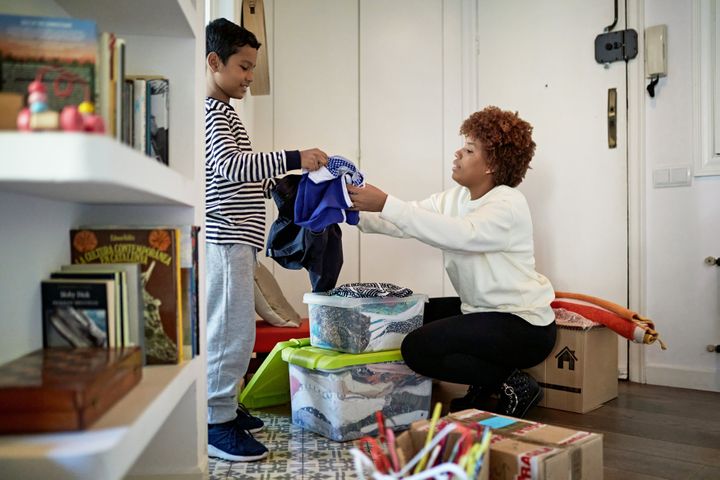
Allowing Too Much Time Between Organising Sessions
“It’s easy to lose momentum and backtrack on progress so it’s important to have consistency, even if it’s a little bit everyday until you achieve your organizing goals.” ― Naik
Putting Unrelated Items In Bins
“I often see people putting unrelated things in a bin and calling it organised. While they have put the items away so that their home is neat and tidy, they haven’t separated and categorised the items in an organised way. This stops them short of the benefits of organisation such as saving time and frustration as well as being able to more easily retrieve and put away the item(s) they’re looking for.” ― Phillip
Organizing More Than One Space At A Time
“Let’s say you are organising your desk and you find something that really belongs in the kitchen junk drawer. You walk over to put it in that drawer only to realise that it needs decluttering, too. As you are decluttering space No. 2, you find something that belongs in your room. You go to put it away in your closet, find there is no space in there, then start organising that area, too. Now you have three organising projects going at once, are running out of time, and are too overwhelmed to know what to do next. Instead, as you begin your organising project, grab a bin or laundry basket to collect ‘move elsewhere’ items. Only after you are done with the first space should you attempt to put the ‘move elsewhere’ items in their respective homes.” ― Nelson
Advertisement
Piling Items To Be Donated In A Corner
“Resist the urge to simply pile donations in a corner to be disposed of ‘later.’ Move items out to their final destination right away. Otherwise, you are likely to second guess your decisions and suffer unnecessary doubt. Alternatively, you may become so accustomed to seeing the piles that you stop noticing them, abandoning them to take up space for extended periods of time.” ― Turner
Creating Systems That Don’t Have An ‘Exit Strategy’
“We are always accumulating things, but the amount of space in our houses is fixed. While it is very satisfying to have homes for every item you own, if you don’t continually edit your collections, your home will start to feel cluttered. Buy the clothes you need and love, but also keep a donation bag at the foot of your closet for those you don’t. Create a paper management system, but once a document no longer serves its purpose don’t feel obliged to keep it around because you made a file folder for it.” ― Nelson
Overthinking Everything
“People over-categorise. Keep it simple and don’t make your categories so complex that you can’t keep up with it. Simple systems will not only benefit you but everyone else in your home. When I’m working with a client where there is excess I always create a ‘back stock’ area. A great example of this is office supplies. You don’t have to keep every pen you own on your desk.” ― Naylon
Not Getting The Other Inhabitants On Board
“When you’re living or working alone, being organised is a lot easier! When you live with a spouse/partner/roommate it takes some joint effort and accountability. And when you have kids (at any age) it can sometimes feel impossible and never-ending. Same goes for being organised at work. There has to be some level of joint expectation and priority of what the environment should look like. Similarly, the systems that are set up need to work for everyone involved so that they can follow it. For example, taking children’s height into consideration when creating a mudroom so that they can easily hang up their jackets and book bags without asking someone else.” ― Melissa Levy, founder of Declutter + Design
Failing To Maintain
“Although cleaning and organising are two completely different things, they do have one important thing in common… maintenance! We never want to make the mistake of thinking that organising is a one and done undertaking. Just as we cannot expect our homes to stay spotless after one day of valiant efforts to clean, with no daily plan for upkeep; we also cannot expect that our earnest organising efforts will be met with success without some form of maintenance. Maintenance isn’t difficult. It can take as little as 10 minutes a day. We can follow an organised system of simply returning things to their proper places daily. This maintenance will make organisation routine, refreshing, and long lasting!” ― Powell
Advertisement
“Once you get organised, it’s just as important to put emphasis on how you’re going to stay organised. It’s not a one and done. When someone isn’t interested in this part, I can tell that they won’t be able to stay organised in the long run. Being organised takes consistent effort.” ― Levy
Putting Off Asking For Help
“A typical challenge with home organisation is when people get stuck, they delay reaching out for help from a friend, family member, or professional. The clutter and disorganisation increase for months, years, or decades. Their procrastination causes overwhelm and strain on emotional energy.” ― Samuels

